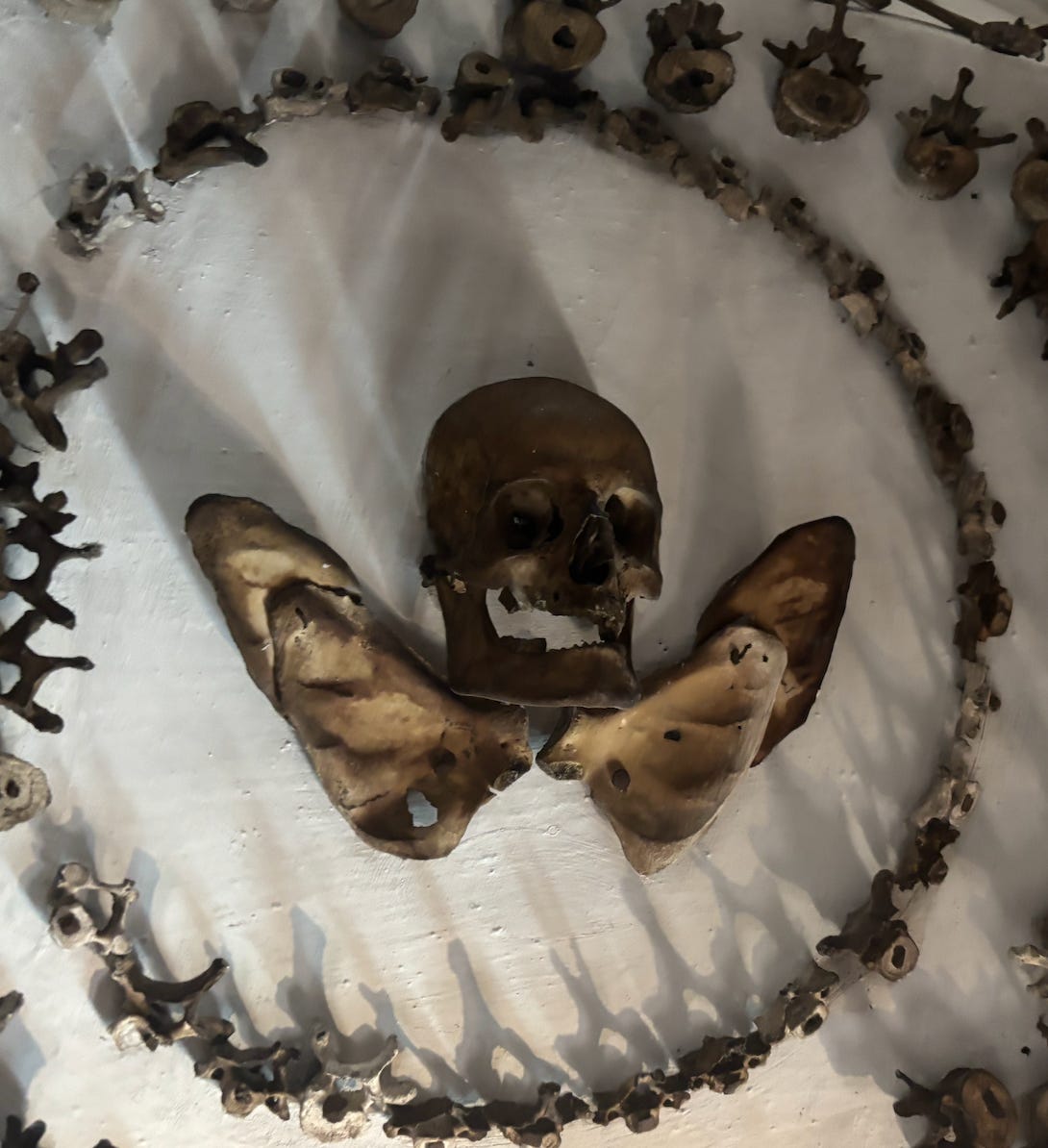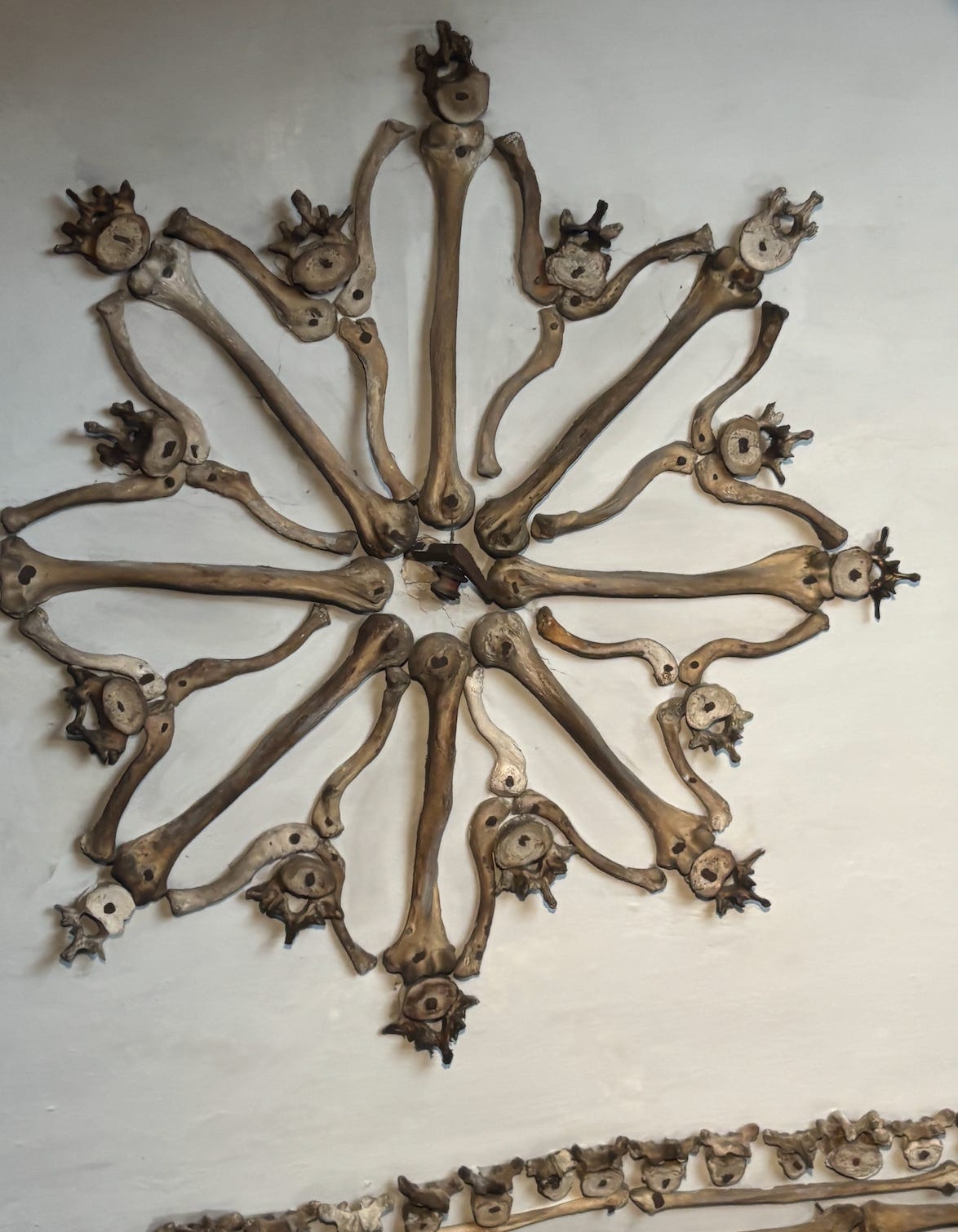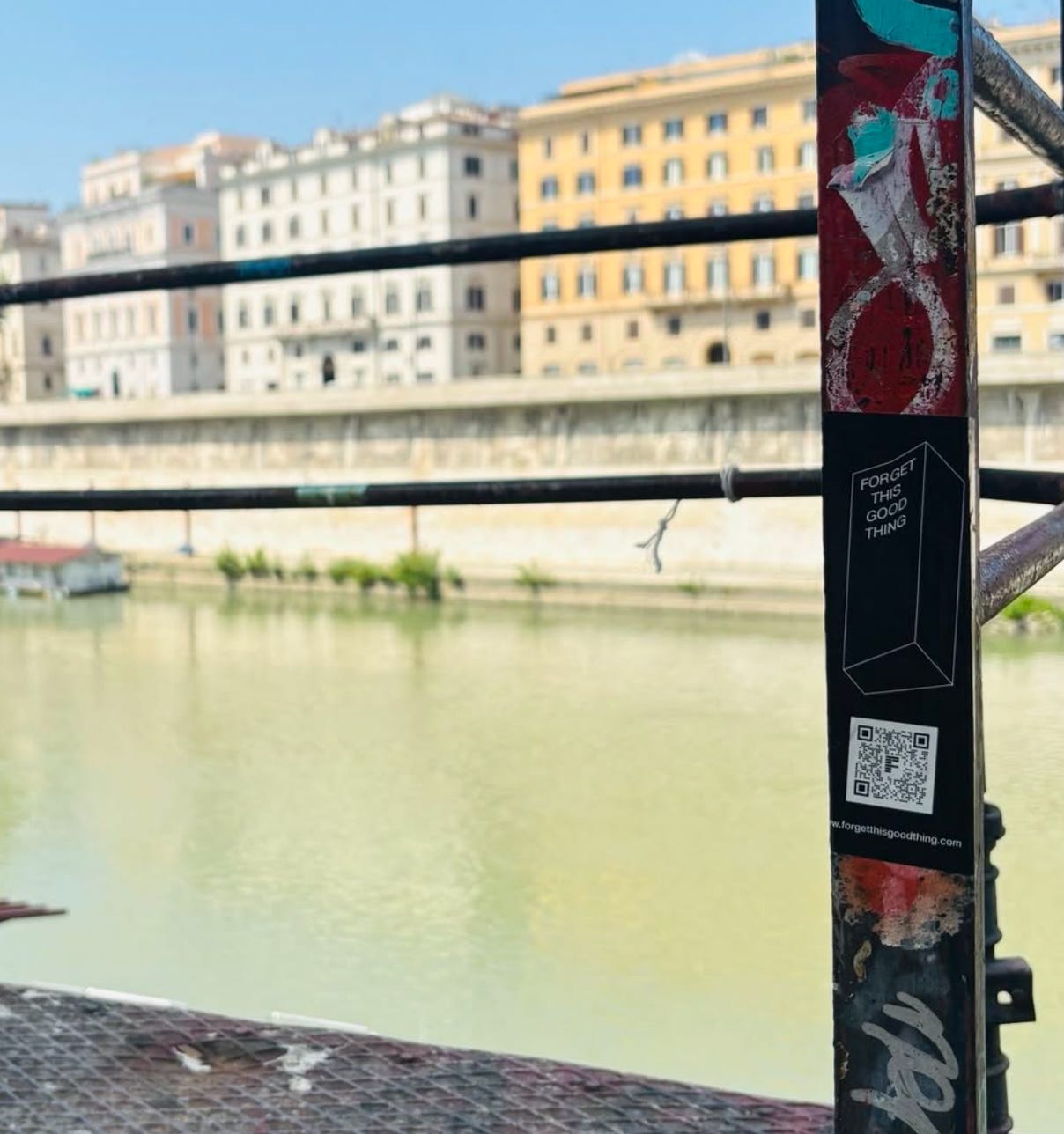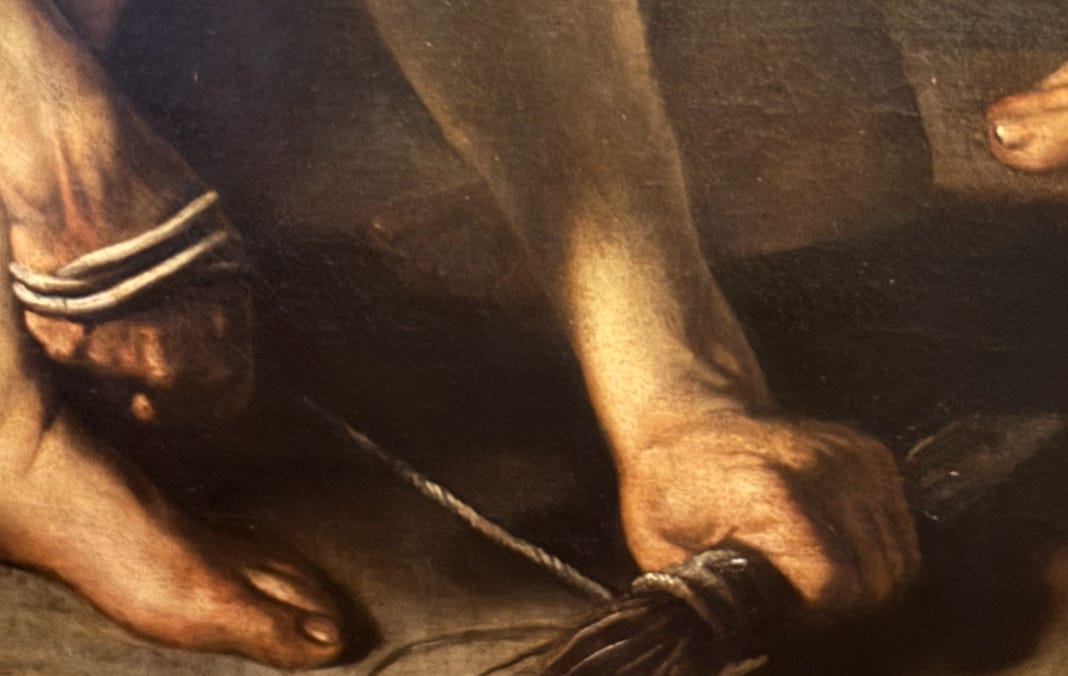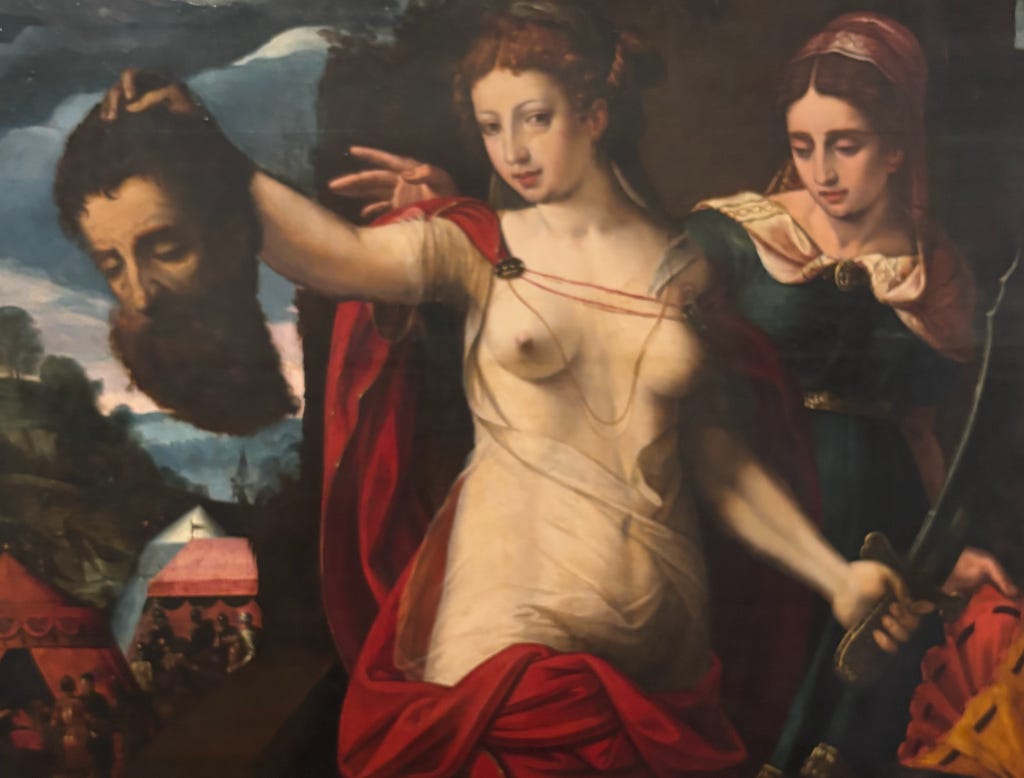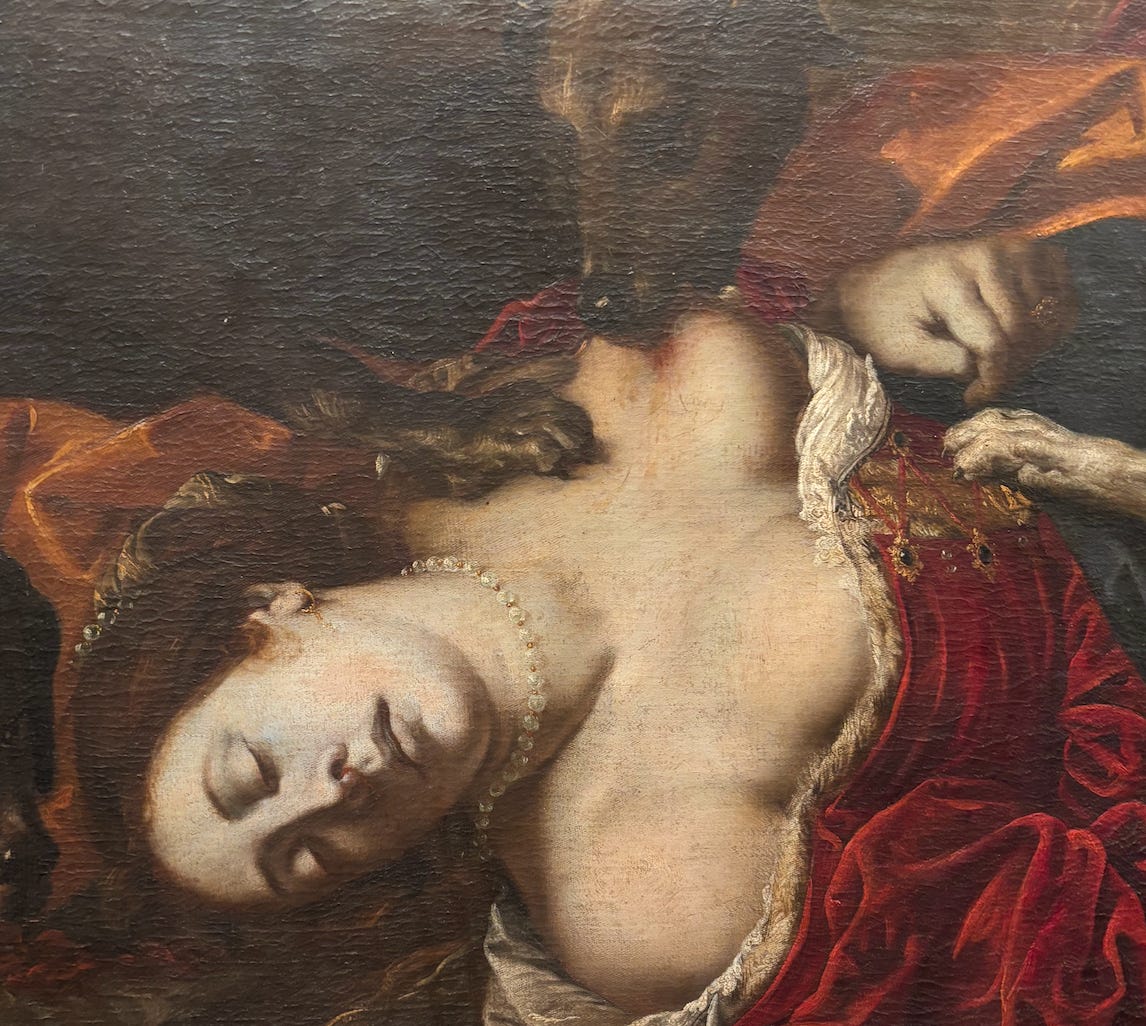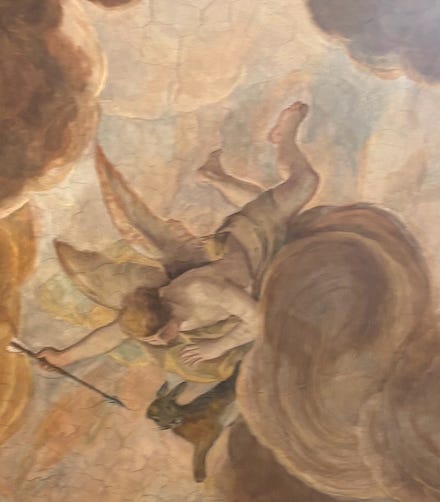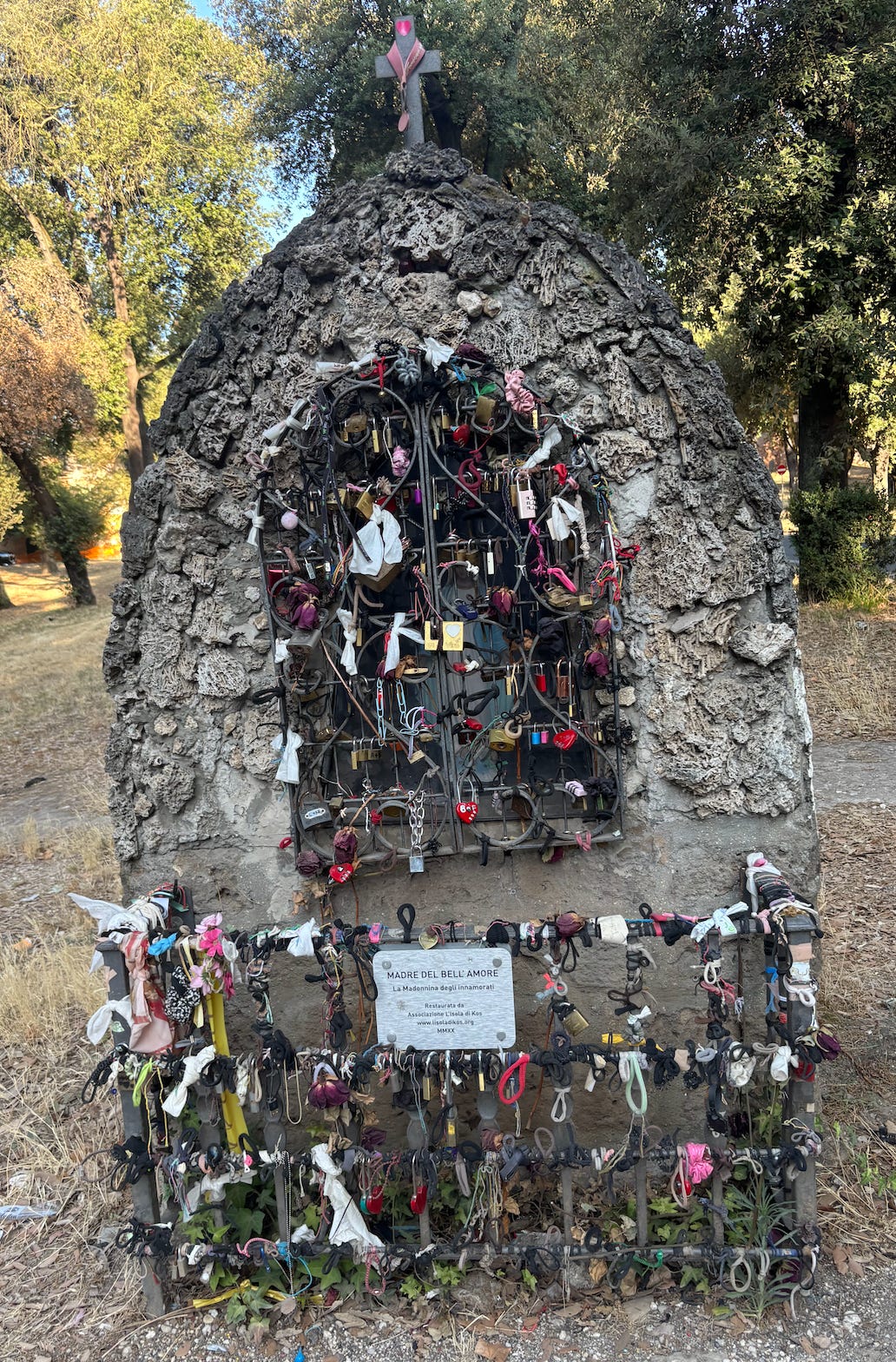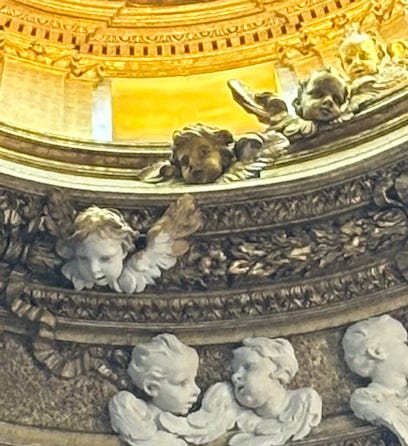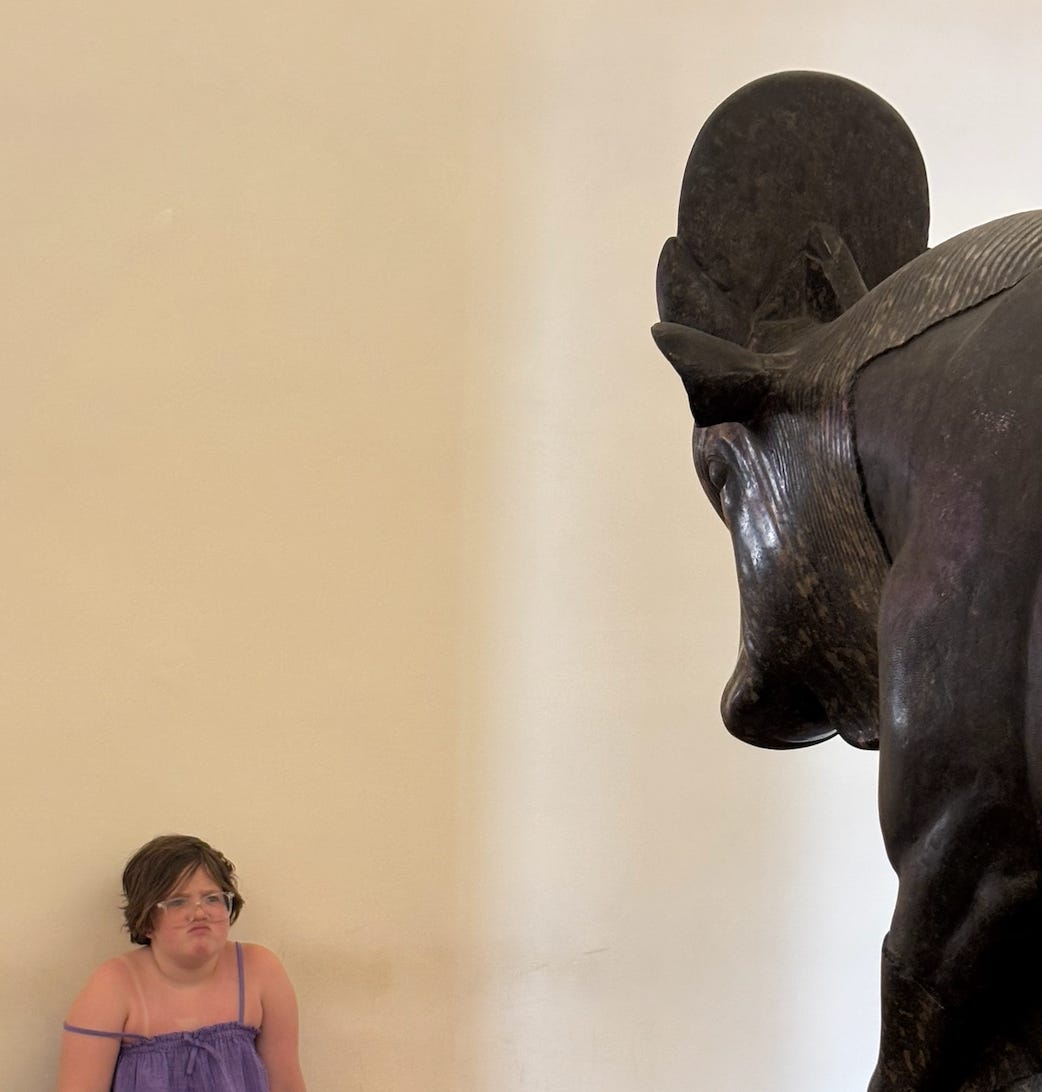Roman Slideshow
Monks, artists, skeletons, the understanding beyond peace, and a family tradition of staring contests with statues.
You don’t have to live this way. That’s the great lesson of travel. People live differently elsewhere, in large and small ways.
Nothing is fixed. All the landmarks of human nature are negotiable. It’s not often I consider what a guy like me might've been under different circumstances, in a different environment.
We went to Italy - my wife, myself and our two kids, about two months ago. My wife and I were both feeling a little tired and put-upon, as working parents of young children might.
A vacation is a bet. The more you need it, the higher the stakes. A failed vacation is a stomach punch. Last year, after a house fire and a hurried move to a new apartment, we went to Cape May, where our kids got lice twice, bickered the whole time. We came home more tired than when we left. The trip to Italy was risky and expensive, but it worked out.
*
The Capuchin Crypt, on the Via Veneto is a convent and monastery where, sometime in the 1700s, they looked around at all the bones they had - some 3,700 monks’ worth - and decided to do something with them. They found one monk, or friar, or what have you, who had shown some aptitude with design and let him have at the 750,000 or so bones. He stuck them to the walls in patterns, posed them with wire, piled them in mounds, arranged them in tableaus.
Of course, everyone wants to see the bones. But the place is Franciscan property, so they have you walk through a little museum to get a little appreciation for the Order before they let you ogle skulls. The museum has a Caravaggio painting of St. Francis in a shaft of light that lands on a skull, and a glass case with the studded belts and whips of varying viciousness for self-flagellation.
I never bothered understand the self-flagellation part of Christianity much. But that day, it was a hundred degrees out. And it was increasingly clear how trying to be comfortable all the time is its own kind of hell. Someone with a more ascetic bent could very well take a long look at physical pleasure and say, “I know a bad deal when I see one.” Might as well tie on a wool tunic in August. Not that I did.
I’ve always appreciated the monastic life. The world is the world, and the world is a better place when it offers more places to hide from it. From a practical perspective, the monastery is as solid answer as any of what to do with all the extra men who don’t want much to do with the life on offer around them. You get to be left alone, and yet contribute in your own way.
Contributing in his own way, the bone-arranging monk put scapulas like wings on the skulls of those slackers and saints.
As art, it changed how the sweaty shoulders of tank-top wearing tourists looked in the piazzas.
Among other grim spectacles, the chapels offered up a canopy of pelvises over a robed skeleton, a clock face out of finger bones and vertebrae, and an eight-pointed star of human shinbones and collarbones, a star that would appeared again over the next two weeks, as ice cream scoops and cones, atop obelisks and in the banter of tour guides who said it was the morning star of maybe not having to die so completely.
The Franciscan mission includes a line proclaiming them to be, “strangers and pilgrims in this world.” Between that and the skulls, you have a hell of a rock-and-roll band.
*
Graffiti, I explain to my little girl, is Italian.
It means little writing, especially little when compared against the TRATTORIA and the Samsung billboard over the Piazza del Popolo.
*
We were in town for the last days of a big Caravaggio show at the Palazzo Barberini. It was crowded, and the crowd was avid. In the 21st century, it’s hard not to see Caravaggio’s work through the prism of all the works that it has influenced, but the paintings still hit with a surprising immediacy.
As a late-night guy in a pre-electric time, one thing Caravaggio had plenty of was darkness. And he learned to wield it. He draws you into the shadows. He tells the story with hands as much as faces.
Pink and white hands caress, betray and murder. Gloved and gauntleted fingers do their jobs, brutal, matter-of-fact. A hand reaches from the bower or a crowd to restrain or intervene, always possibly too late. The intensity of it, the violence and loathing within gilded frames - only someone who’s itched uncontrollably would inflict that kind of scratch. In the gallery, this was the secret among kindred spirits and fodder for the gawkers.
There were a few John the Baptists, a dewy lad with mischief in his eyes, who’s fled to the wilderness to find reality, or at least escape its enemies, who he imagines are his own. But he has the physique and smirk of Bacchus.
The canvases, like so many, bear the mark of conflicting churches, merchants, warlords and artists. The patron’s name is written in gold. The artist’s identity is painted in code. Who works for who? Who’s fooling who? Now ask again, three hundred years later.
*
Away from the exhibit, the rest of the palazzo was empty of people, though filled with renaissance art. Judith and Holofernes was a minor tale from the bible, but a hugely popular subject back then, because she cuts the guy’s head off. Caravaggio has a famous one, where Judith has the unforgettable look on her face of someone learning the facts of life with considerable disgust but unerring determination. There was another one in the palazzo that made me wonder about how the merchant-prince explained the commission to his wife.
“It’s biblical,” he says.
“It doesn’t look biblical,” she says.
“It is. From the book of Judith. You can ask the priest.”
“I’m not showing that to the priest. Just put it in your study, with the other one.”
“Which one?”
“The dog one.”
“The dog one? She’s a sainted martyr! Painted by a great master!”
“Just keep it in the study,” she says.
*
Rome’s cinematic universe includes Asclepios, sphinxes like cater waiters, Germanic slaves, tens-a-barrier ribbons and people who seek out tens-a-barrier mazes just so they know where to go. Fauns giggle through the prayers. The satyrs seem as at home as the saints. The ruby ring on the bathroom attendant’s hand might be real.
A nude statue that turned Boston on its head just a hundred years ago has gone unremarked upon for millennia in Rome. The quirky grandeur common in Rome goes demolished in New York every other day just to make room for more leasable square footage.
*
Rome’s a funny place. The churches gild the remains of the martyrs. The clippety clop of tourist flip flops echo on crypt lids in church aisles. Electric light shines on the ancient idols for a Euro.
An angel you strain to see on a forty-foot-high ceiling stabs a rabbit with an arrow. Reveries broken by motor bikes resume along altered trajectories. For one moment only, a message becomes clear: Exacerbate the contradictions. The wink-and-nod consolations may promise a peace beyond understanding. But they will lead to the understanding beyond peace.
*
It was a heatwave, one hundred degrees or so for the first five days we were there. The power went down a few times. A woman collapsed beside me at the wall of Vatican City. A fellow lunchtime diner in a small restaurant scowled then slipped under the table. The band of my panama hat started to smell like the inside of a baseball glove.
*
The heat wasn’t the only incitement to feverish thinking. We were in Rome during a jubilee year, crowded with pilgrims. While sating my curiosity and aesthetic thirst, I’d run into signs like, “Confessions in Swahili and Dutch - Mon. Weds. Fri.,” and be reminded of the purpose of these places. The remains of the last Pope were doing big box office at the Santa Maria Maggiore.
Often in trouble and never comfortable with piety, I gave the pilgrims a wide berth. I’ll go sit in the Presence, but not in the front row.
*
On two previous visits to Rome, I’d skipped Saint Peter’s Basilica. It felt like a global HQ. This time, I waited on line and watched guys try to get bird crap off the Pope’s patio with a firehose. On the same line, I walked around a dying bird, like some test that all the pilgrims were failing on their way to a blessing, including me.
In St. Peter’s, a guy sneezed, and I wanted to say bless you, but I didn’t think I had the authority.
*
I took my daughter to see the Sistine Chapel one afternoon, but not her brother. It’s not easy to explain a museum within a series of papal apartments, within a standalone religious state, within a city to a five-year-old boy, never mind the Sistine Chapel within all of that, and why he can’t come. But I tried.
“Did you talk to the real G-d?” my little boy asked upon our return.
*
Walking in the Borghese gardens, we encountered a Madonna amid a hundred stolen hair ties, Our Lady of Crushes.
Down the hill, behind a fence, we encountered Our Lady of Timely Streetcar Repair. To my American eyes, it was strange, involving heavenly figures in daily life. The land of the free and home if the brave is strictly Do-It-Yourself when it comes to human desires and human dignity.
*
In some countries, they say the word system apologetically. It’s in these places we take our vacations. In some centuries, they say the word system apologetically. It’s in these epochs we take our daydreams.
*
The Sant Andrea al Quirinale isn’t as famous as Bernini’s Ecstasy of St. Theresa. It is, however, the only church of Bernini’s that he would visit regularly by himself. On a sunny day, it takes a minute for the eye to adjust, and the first impression is that of a grandma’s house, with all that tarnished gilding. Then a detail catches - a diagonal row of cherub faces looking down from the oculus of the dome - and it starts making sense.
Along the rim of the dome, human figures lounge, chat and watch, along with more goofy cherubs. It’s an audience for the parishioners, who do the one thing G-d can’t do: Pray. Behind the altar, angel faces bubble up like a delirium of unborn souls, unsung songs, untold jokes. Full-sized gilded angel women look on bemused or crestfallen as the saint is hung on his X-shaped cross.
The whole place is an insistence on an unspoken but potent element of faith - the divine audience. Bernini knew the angels were watching, or at least he made art as if they were.
*
It’s all very physical, which is why it works. The chubby, pointing finger of the sainted baby is tender, intelligent and arbitrary as grace.
It’s all very physical, which is why it goes awry. You get a lot of handsome centurions just doing their jobs, a lot of slaughtered infants. It starts to feel like the church domes are combination locks, turned one degree off.
To distrust the world and not despise it: This is either the trick or the trap. To distrust the world and not despise it, some corruption must come into play - some sweetness, some preferential treatment flickering on a pretty face, some welcome nearness of breath, some obscure flavor that makes sense of a home hardly seen, the sun like an emergency, a gate, a plaza.
*
Throughout my days in Rome, my eye was tricked repeatedly - by tapestry like paint, paint like stone, stone like flesh. I became accustomed to my sight being tricked in favor of something unnamable, the window cracks forming a wolf’s head.
*
In the Palazzo Altemps, there’s an obsidian Bull of the Sun left over from the Roman Empire’s fascination with Egypt. The beast carries the violence that will be done to it, to spite or placate Time, serenely.
My daughter, a child after my own heart, engaged the statue in a staring contest. Like her dad when he was young, she thought she had an above-average chance of winning.
A few days later at the airport I’d explain the concept of a no-win situation to her, while she was in tears, about to board a plane.


